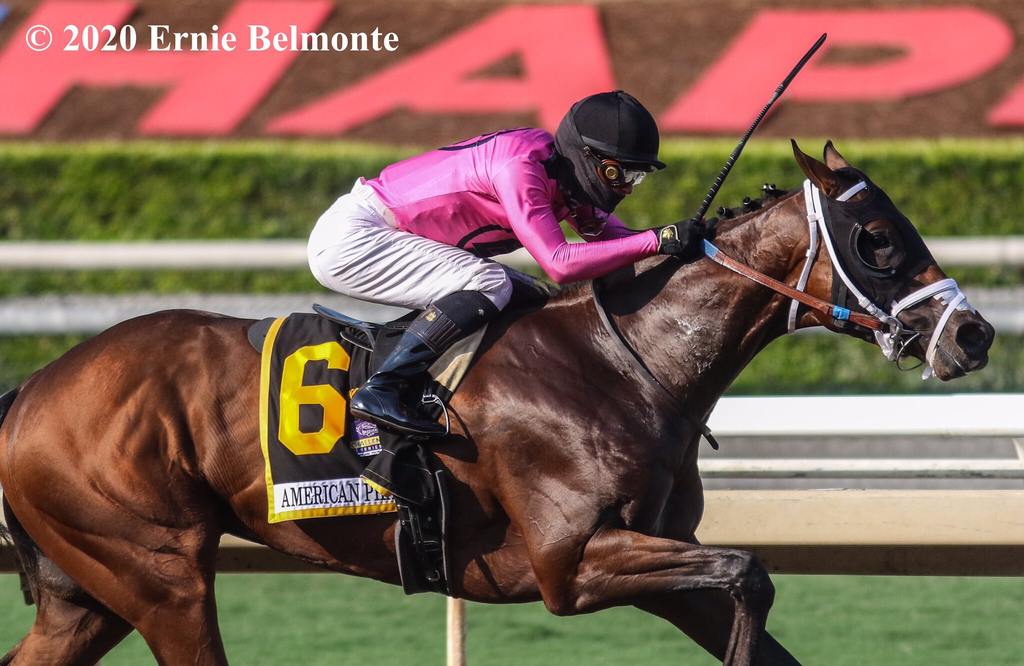
The sport of Kings used to be one of the most popular sports in all of America. Not only heavily attended and viewed, but also heavily bet upon.
During the Depression and prior to the second World War, Thoroughbred racing popularity reached a fever pitch as Americans saw the opportunity to earn a quick and large payday through gambling at the tracks. There was a drop in popularity after World War II, but after the advent of the Triple Crown in its current format, things started to pick back up.
A rash of Triple Crown winners began, starting with Secretariat who became a household name thanks to his incredible feats during his Triple Crown era. He was then followed by Seattle Slew and Affirmed. The popularity created by these three is a large reason that the 70’s are known as racing’s Golden Age.
The popularity kept up for quite a while, even with a long Triple Crown drought. Several near misses, seemed to have fans and bettors, believing that each new year would be “the year”. From 1994 to 2003, racing handle saw nothing but continuing growth, hitting a record of 15.18 billion….
From here, enter the popularity of online casinos starting with Poker and the “Poker Boom”, where the online poker player pool double in size each year. During the Poker Boom, Racing Handle took a hit. From 1996 to 2002, gains in the handle had ranged from 1.9%-11.2% with several years recording a gain of 3.2%-4.6%. But in 2003, also the first year of the Poker Boom, racing gained less than 1% in handle, coming in a small .8% increase.
Racing didn’t see another gain until 2006, when the handle raised to 14.785 billion from 14.561 billion in 2005. 2006 was also the year when the Unlawful Internet Gambling Enforcement Act became law, causing several online poker sites, including Party Poker, to leave the United States.
Despite that, and other challenges, online gaming and casinos has not only continued to grow, but flourish. In fact, in 2020, of the $227 billion in revenue brought in by casinos, $66.67 was from the online gambling industry. It was also expected that the industry would grow at 11.5% Compound Annual Growth Rate from 2020-2027. This was pre-COVID19, as of 2023, the industry is still expected to become a $100 Billion Industry by 2026.
Meanwhile, racing has had several issues getting back its high points. Since COVID, handle has hovered about 12 billion, but attendance in racing has struggled, even on bigger race days. The attendance for the 2022 Kentucky Derby was 147,294, which is well below the 155-160K the race normally draws. The Breeders’ Cup, held at Keeneland in 2022 attracted 85,824 people, which nearly 10K less than the over 94K that turned out in 2015.
While the numbers look bleak, all hope is not lost for racing if it can learn what works and implement it in the future. More and more people are recognizing the “skill” aspects of gambling and gaming. There are many ways people can learn the skill involved in different games and even in horse racing handicapping however the industry itself does a poor job in self promoting the skill factor. There is a wide belief that any gaming or gambling is strictly luck and chance and involves no skill whatsoever. That is not correct. One can have a compiled book list to read and reference or learn from a true professional. Experience and trial and error can help if approached systematically with a focus on honing your skills.
For instance, American racing could look to Hong Kong in pointers to improve its product. There are several differences between Hong Kong and American racing, first and foremost, it has a central racing authority, the Hong Kong Racing Association, which manages race meetings AND on/off track betting. This means all rules are enforced over all tracks, eliminating confusion, and creating quality product that plenty of fans.
Another big thing that could had a influence on betting is transparency. Access to information with Hong Kong tracks is incredibly easy, with access to trackworks and vet records being available with a simple click.
They also race less, only 83 times per year. This results in larger fields, which often results in higher, more enticing odds. Oftentimes, less is more, and even Monmouth can attest to that. In 2017, Monmouth Park went from 57 to 50 racing days to maintain purse structure. The result was a 7.9% increase from 2016. Off Track wagering saw a .4% increase. Daily attendance also rose 7.4% from 2016.
Maybe, just maybe, implementing some of these changes can give racing a third big flourish.



